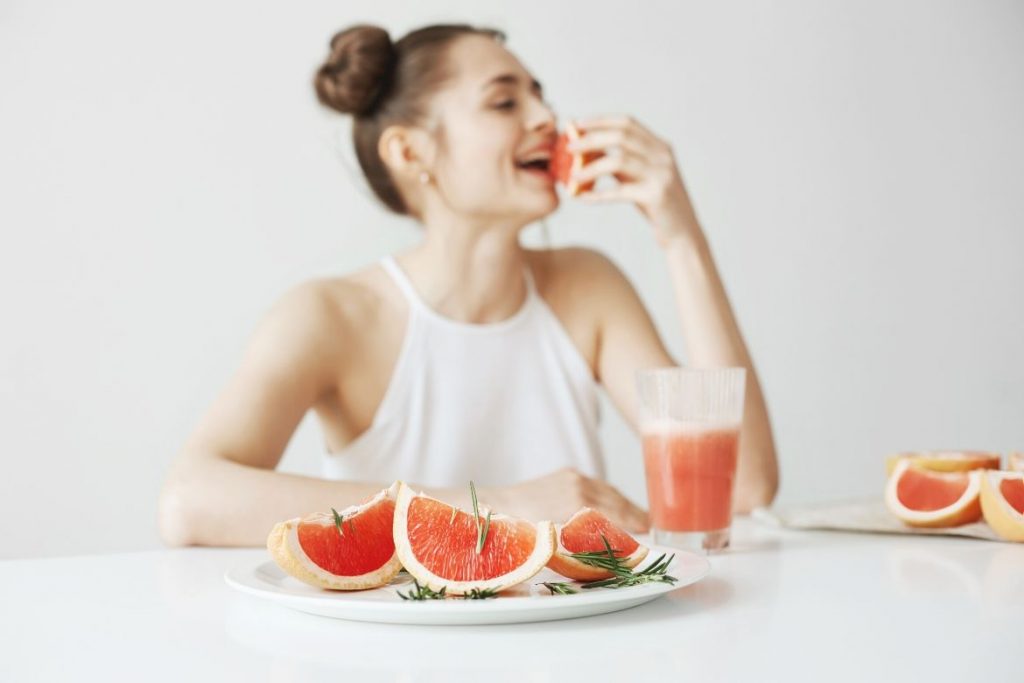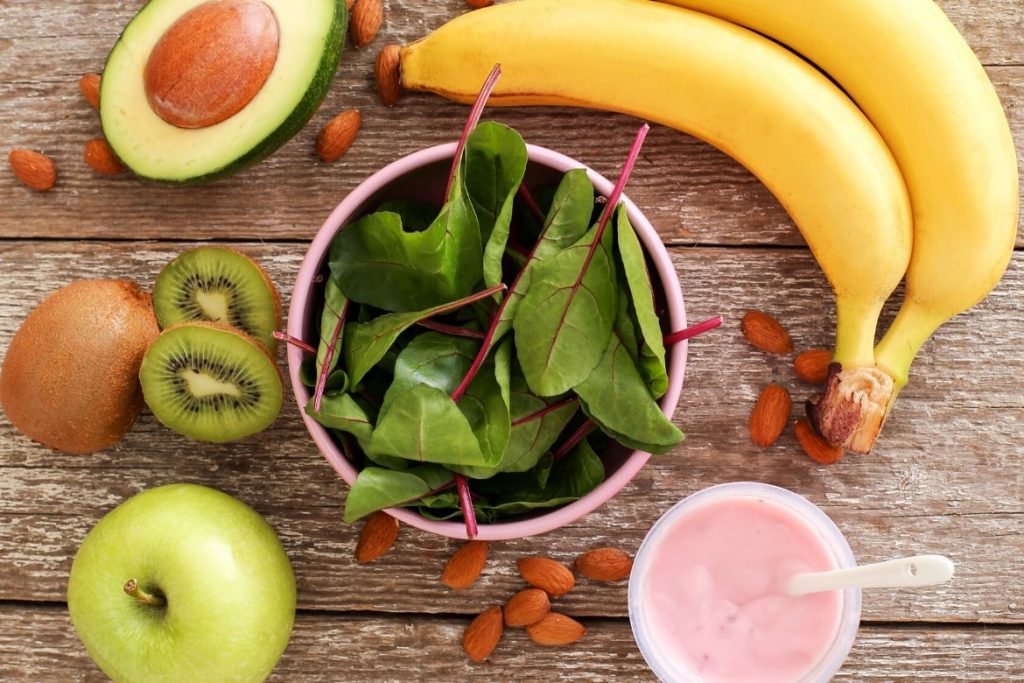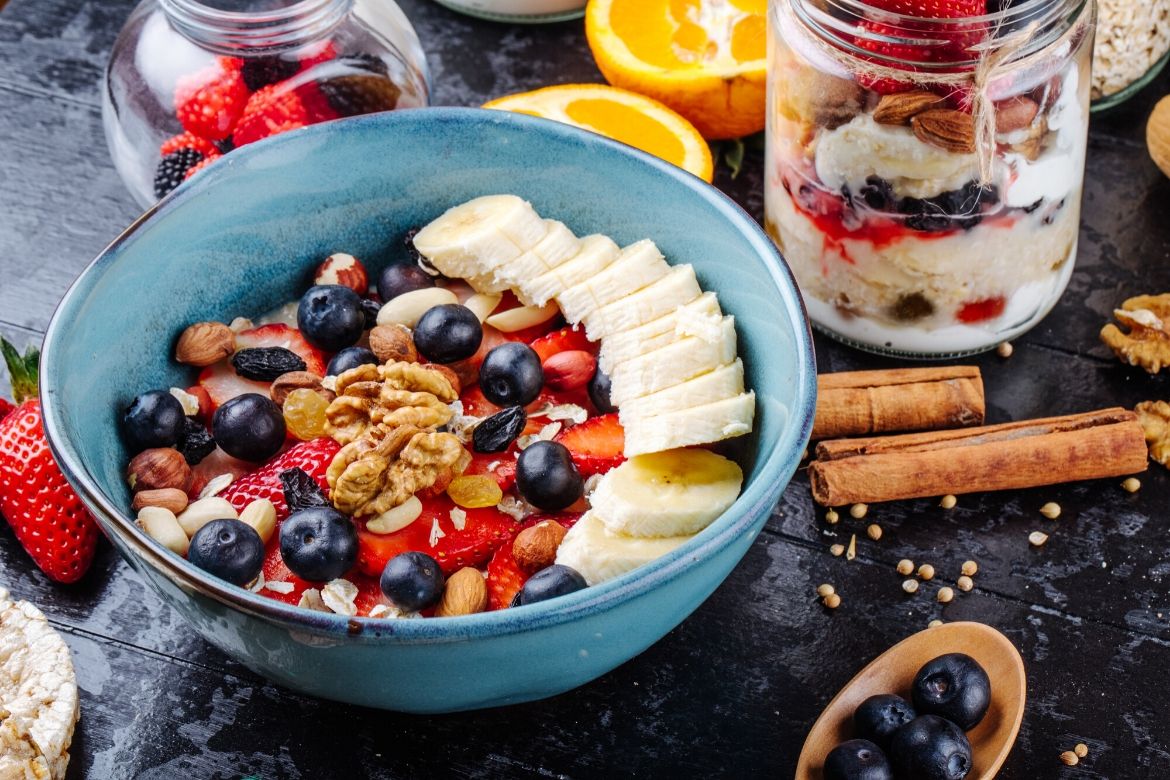The teenage years are a period of quick development and advancement, so a healthy adjusted diet is especially significant. Healthy, active youngsters can have huge hungers. In case you’re a teenager, it’s imperative to eat well-adjusted dinners, instead of an excessive number of tidbits that are high in fat, sugar or salt.
Also Read:-Reduce Acne With The Help Of Carrot Creamy Soup!
What to eat
You ought to eat a healthy adjusted diet that coordinates your energy needs. This ought to be comprised of the five fundamental food groups.

- fruit and vegetables
- potatoes, bread, rice, pasta and other bland starches
- beans, beets, fish, eggs and different proteins
- dairy
- oils and spreads
- Fruit and vegetables
All age groups are urged to eat five segments of fruit and vegetables consistently. Exploration shows that five bits daily can help forestall coronary illness and a few sorts of malignant growth. Fruit and vegetables are additionally brimming with vitamins, minerals and fiber and are low in fat.
A part is about 80g. Instances of a part include:
- one medium-sized bit of fruit, for example, an apple, orange, banana or pear
- two little fruits, for example, kiwi, satsuma or plums
- one huge cut of pineapple or melon
- one tablespoon of dried fruit
- three piled tablespoons of fresh or solidified vegetables
- one glass (generally 150ml) of fresh fruit juice or a smoothie
Dried fruit and fruit juices or smoothies can each be considered just one segment a day, anyway much you have. Both dried fruit and squeezes ought to be taken with a feast as the high sugar substance can be harming to teeth.
Also Read:-Nendran Banana (Kerala Banana) Halwa – Healthy Weight Gain For Kids
2. Potatoes, bread, rice, pasta and other brown sugars
Brown foods, for example, bread, rice, potatoes and pasta are a decent source of energy, fiber and B vitamins and ought to be utilized as the reason for suppers. Pick higher-fiber, wholegrain assortments, for example, whole wheat pasta, earthy colored rice, or by leaving the skin on potatoes.
Wholegrain food contains more fiber than white or refined dull food, and frequently a greater amount of different vitamins. We likewise digest wholegrain food all the more slowly and can assist us with feeling full for more. They likewise help forestall obstruction, ensure against certain tumors and decrease the danger of coronary illness.
Dull foods are likewise low in fat, however the margarine or rich sauces that are regularly added to them can have a higher fat substance.
3. Beans, beets, fish, eggs and different proteins
Beans, peas and lentils are acceptable options in contrast to meat since they’re normally low in fat, and they’re high in fiber, protein, vitamins and minerals.
Other vegetable-based sources of protein include:
- tofu/bean curd
- finished vegetable protein – a fabricated soy item
- mycoprotein – a contagious protein
These are generally accessible in most significant grocery stores.
Also Read:-Weight Gainer Diet Plan To Look Good!
Eggs are a helpful option in contrast to meat and are very flexible. They can be mixed, bubbled, poached or made into an omelet.
Youngsters are prescribed to eat two parts of fish seven days, one of which ought to be sleek. Slick fish, for example, salmon, mackerel and pilchards contain heaps of omega 3 fatty acids and are useful for heart health. Fresh, solidified and tinned fish are generally acceptable choices to pick.

Meat is a decent source of protein, vitamin B12 and iron. A diet rich in iron will help forestall iron inadequacy paleness which is a typical condition in teenage young ladies. Prepared meats and chicken items ought to be constrained as they are high in fat and salt and lower in iron.
- Dairy
Milk and dairy foods (and options, for example, yogurt and cheddar, are significant sources of calcium, vitamins An and D, B12, protein and fat. Calcium is expected to help assemble solid bones and for nerve and muscle work.
Vitamin D is expected to help ingest calcium and in this manner has a significant impact in fortifying bone.
Attempt to pick lower fat assortments, for example, semi-skimmed or skimmed milk, curds, Edam cheddar and half fat cheddars. When purchasing dairy options, for example, almond or soya, go for unsweetened, calcium-rich assortments.
- Oils and spreads
Getting enough healthy fats is basic for development and advancement. The best are unsaturated oils and spreads for instance, rapeseed, olive or sunflower.
What to maintain a strategic distance from
- Abstain from eating shark, swordfish and marlin in light of the fact that these contain high degrees of mercury contrasted with other fish which, until the age of 16, may influence a youngster’s creating sensory system.
- Foods high in fat, especially soaked fat, sugar or salt, should just be eaten in modest quantities or not all the time.
- From the age of 11, everybody should attempt to eat close to 6g salt and 30g of sugar a day.
- In the event that you are active and eating a healthy adjusted diet, you ought to have the option to keep up a healthy weight.
- In the event that you are overweight, you should adhere to a fair diet, attempt to eliminate foods containing sugar and fat, and get a lot of physical activity. Teenagers ought to focus on at any rate an hour of physical activity consistently.
Specifically, it’s a smart thought to:
Also Read:-Weight Gain Tips For You!
- cut down on desserts, cakes, bread rolls and bubbly beverages
- eat less fatty foods, for example, chips, burgers and singed food and handled foods, for example, moment noodles
- eat normal adjusted suppers
- base dinners on dull foods, picking wholegrain assortments at whatever point conceivable
- eat more fruit and vegetables
Intend to drink six to eight glasses of liquid consistently. Water, low fat milk and sans sugar drinks including tea and espresso all check. The emphasis ought to be on eating a healthy diet and being active instead of on shedding pounds.

Being veggie lover or vegetarian
Veggie lover or vegetarian diets can be healthy, giving that a wide assortment of foods is eaten. At the point when meat and creature items are maintained a strategic distance from, additional consideration will be expected to ensure that you get all the protein, vitamins, iron and different minerals required.
This is especially significant on the off chance that you are following a veggie lover diet. It’s progressively hard for those following a veggie lover diet to get all the vitamins they need particularly, Vitamin B12 and riboflavin as these are found in creature food sources.
It’s accordingly suggested that vitamin B12 and riboflavin (another B vitamin) enhancements ought to be taken.
Getting enough protein
Ensure you locate an option in contrast to meat, fish and chicken as the principle sources of protein. These could include:
- beets, for example, lentils, margarine beans, kidney beans and chickpeas
- bean curd (tofu)
- soya protein (finished vegetable protein)
- nuts, either finely slashed or ground (except if there is a family ancestry of sensitivity)
- milk
- cheddar
- egg
Getting enough iron
Iron is significant in making red platelets, which haul oxygen around the body so it is significant for teenagers to get enough iron, particularly teenage young ladies who are at expanded danger of iron inadequacy sickliness.
Great sources of iron include:
- wholegrain oats
- leafy green vegetables, for example, spinach and watercress
- beets
- dried apricots or figs
Eating foods containing vitamin C with iron-rich foods can make it simpler to assimilate iron from our food.
You ought to likewise abstain from having a lot of tea or espresso since it lessens the measure of iron consumed by the body.
With the teen years come a huge measure of changes. Your teen will develop inwardly, practically, and mentally, building up a feeling of autonomy, personality, and confidence.
Your teen will likewise develop genuinely, expanding their requirement for calories and vitamins. Helping your teen build up a positive relationship with food will go far in controlling him to turn into the healthy, confident grown-up you need him to be.
Also Read:-Benefits of exercise, healthy diet and meditation
Becoming Healthy
Young ladies experience a development spray around the age of 12 and young men around the age of 14. Regardless of whether your teen feels excessively awkward or excessively fat, it’s essential to take the concentration off your teen’s body and rather point your teen’s consideration on the delight of eating well and practicing good eating habits.
Practicing good eating habits
The most ideal way your teen can keep up a healthy weight is to eat a diet rich in whole grains, fruits, vegetables, no-fat or low-fat milk items, beans, eggs, fish, nuts, and lean meats.
Eating healthfully implies getting the correct parity of vitamins. As your teen develops, the person in question will require more calories and an expansion of key vitamins including protein, calcium, and iron.

How much a teen ought to eat relies upon their individual needs. All in all your teen ought to eat a shifted diet, including:
- Fruits and vegetables consistently. Your teen ought to eat 2 cups of fruit and 2 ½ cups of vegetables consistently (for a 2,000 calorie diet).
- 1,300 milligrams (mg) of calcium day by day. Your teen ought to eat three 1-cup servings of low-fat or sans fat calcium-rich foods consistently. Great sources incorporate yogurt or milk. One-cup counterparts incorporate 1½ ounces of low-fat cheddar or 2 ounces of sans fat American cheddar.
- Protein to manufacture muscles and organs. Your teen ought to eat 5½ ounces of protein-rich foods consistently. Great sources incorporate lean meat, poultry, or fish. One-ounce counterparts of other protein sources incorporate ½ cup of beans or tofu, one egg, a tablespoon of nutty spread, and ½ ounce of nuts or seeds.
- Whole grains for energy. Teens ought to get 6 ounces of grains each day. One-ounce counterparts incorporate one cut of whole grain bread, ½ cup of whole grain pasta or earthy colored rice, 1 cup of bulgur, or 1 cup of whole grain breakfast oat.
- Iron-rich foods. Young men twofold their fit weight between the ages of 10 and 17, requiring iron to help their development. Young ladies need iron for development as well, and to supplant blood they lose through feminine cycle. Great sources of iron incorporate lean hamburger, iron-rich oats and breads, dried beans and peas, or spinach.
- Restricting fat. Teens should restrain their fat intake to 25 to 35 percent of their absolute calories consistently and they ought to pick unsaturated fats over immersed fats at whatever point conceivable. Healthier, unsaturated fats incorporate olive, canola, safflower, sunflower, corn, and soybean oils; fatty, coldwater fish like salmon, trout, fish, and whitefish; and nuts and seeds.
Drinking Healthy
Your teen should drink for the most part water and low-fat or sans fat milk. Consider pop and misleadingly improved fruit squeezes as sweets or treats and hold them for exceptional events. They might be delicious however they are loaded with void calories.
Moving Healthy
Like great nutrition, physical activity can manufacture muscles, bones, and lift your teen’s spirits. It can likewise lessen your teen’s hazard for constant diseases, for example, type 2 diabetes, coronary illness, and high pulse.
Teens should be active for an hour or more on most or the entire days of the week. Have your teen supplant TV and PC time with physical exercises the person appreciates like swimming, running, or b-ball, have your teen walk or bicycle to class, and incorporate yard work and strolling the pooch in their collection of tasks.
Key focuses
- Teens need additional vitamins to help bone development, hormonal changes and organ and tissue improvement, including the mind.
- Teens ought to have breakfast, drink water and cutoff highly prepared food, sweet beverages and eating out.
- Healthy dietary patterns and physical activity can help lower the danger of heftiness.
- The teen years are a period of fast development. They need additional vitamins to help bone development, hormonal changes, and organ and tissue improvement, including the cerebrum. The two fundamental vitamins of worry for teenagers are calcium and iron.
Calcium
Calcium is significant for bone development. In the event that teens streamline their bone health, they have a diminished danger of cracks and of creating osteoporosis during adulthood. Females are especially in danger on the off chance that they don’t meet their calcium prerequisites. Females matured 13 to 17 have an every day suggested intake (DRI) of 1300 mg/day. Guys of a similar age meet their necessities at around 1400 mg/day. Most teens don’t meet these every day necessities.
Iron
Iron is another significant supplement for teenagers. Teens need iron as they increase fit weight. Females additionally need iron when they begin bleeding. By and large, male teens meet their iron prerequisites with little trouble. Notwithstanding, females matured 13 to 17 scarcely meet their necessities of 15 mg for every day.
Food habits
Alongside physical changes, teens become progressively autonomous as they develop. Dietary choices are one of the principal choices teens begin making all alone. Nonetheless, a few teens will in general settle on poor food decisions. In general, teens will in general neglect to meet their day by day suggested measures of vegetables and fruits and whole grains. Also, teens frequently have expanded intake of highly prepared foods and foods or beverages that are high in sugar, sodium and soaked fats
There are four significant food habits of concern.
- Skipping breakfast
Breakfast is a significant feast of the day as it assists with guaranteeing every day supplement needs are being met. It likewise improves school execution and keeps up a healthy weight. Most of teens don’t have breakfast all the time.
- Expanded utilization of highly handled foods
This incorporates foods, for example, sodas, nibble foods, accommodation foods and sweets. Everybody should expect to diminish their intake of these foods. Nonetheless, for certain teens, up to one portion of their energy intake is from these different foods. This is of worry as highly handled foods are frequently high in fat, calories and sugar however are low in vitamins and minerals.
- Expanded eating outside the home
Eating outside the home has expanded, and a great deal of the foods devoured in cafés are high in fat and calories, particularly at drive-through joints. There has been an expanded utilization of pizza, cheddar burgers, and salty snacks with teens, generally because of eating out. Teens should expect to eat more food arranged inside the home, particularly snacks.
- Expanded utilization of sodas
An investigation taking a gander at American young people matured 6 to 17 discovered soda pop utilization expanded from 37 percent in 1978 to 56 percent in 1998. The expansion in soda utilization could be ascribed to the expansion in café eating.
Active teens
Active teens can get all the vitamins they have to play sports by following Canada’s Food Guide. Thusly, they don’t have to take supplements. Active teens may require somewhat more protein than latent teens; be that as it may, this can be practiced through diet alone. Truth be told, some protein supplements offer a similar measure of protein found in a serving of meat, a half cup of tofu or some milk.
Water is likewise significant for active teens. Physical activity can make a teen got dried out. Here are a few hints on remaining hydrated.
- Drink two to four cups of water one to two hours before physical activity.
- Drink another two to four cups of water 10 to 15 minutes before physical activity.
- Drink about a half cup of water at regular intervals during physical activity.
- Drink one to two cups of water after physical activity.
- Make sure to continue drinking water regardless of whether you don’t feel parched.
- Sports beverages and energy drinks are not typically fundamental. For easygoing competitors, water is all you need.
Healthy eating tips for typical and overweight teens
- Increment intake of whole grains, vegetables and fruits.
- Appreciate standard physical activity.
- Eat three suppers consistently and appreciate snacks between dinners.
- Incorporate protein-containing foods in suppers and tidbits.
- Appreciate an assortment of foods.
- Pick healthy snacks, for example, vegetables and fruits, or prepared snacks rather than seared.
- Drink water rather than sodas, sweet squeezes or sports drinks.
- Get ready food at home utilizing whole grains, vegetables and fruits.
- Breaking point foods high in sugar, sodium or immersed fat.
- Eat inexpensive food and prepared foods less frequently.
- Eat when you’re eager; stop when you’re full.
- Focus on portion sizes
